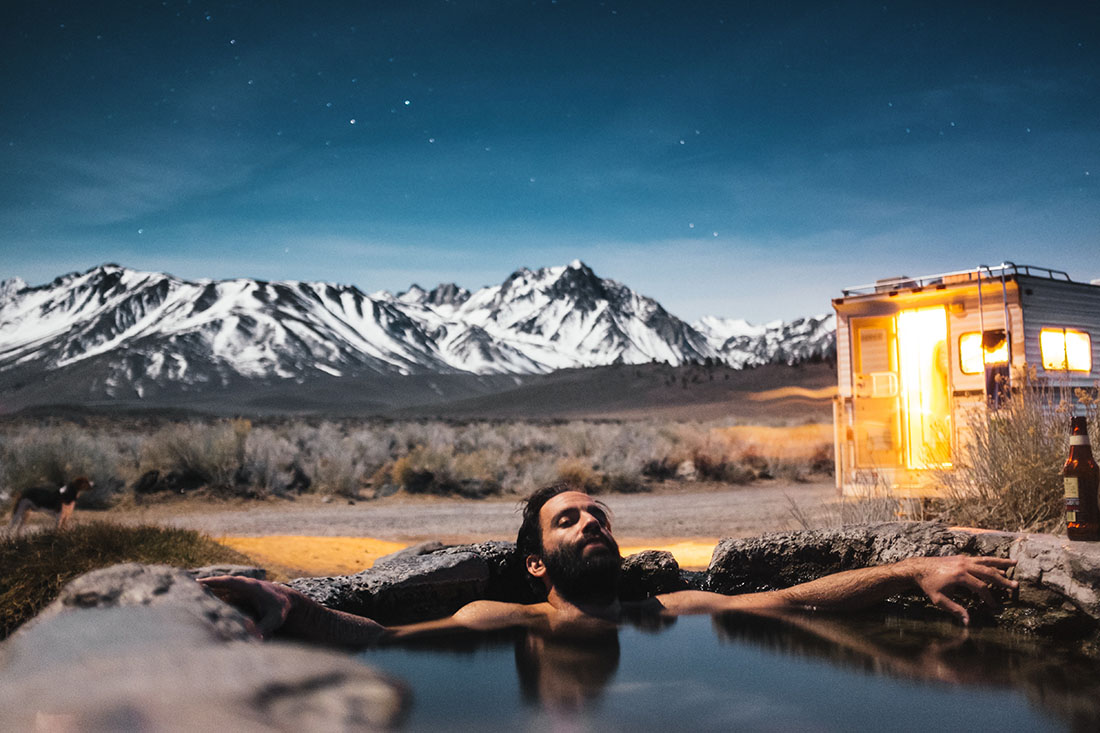Many RVers don’t opt to stay in their rig when the weather gets colder. Heading south to a warmer climate or winterizing your RV for storage are the most popular choices. But that doesn’t mean they’re the only choices. Plenty of folks do what they need to keep their RVs warm, dry, and comfortable for four-season camping. In this article, we’ll cover five tips to prep your RV for all-weather camping!
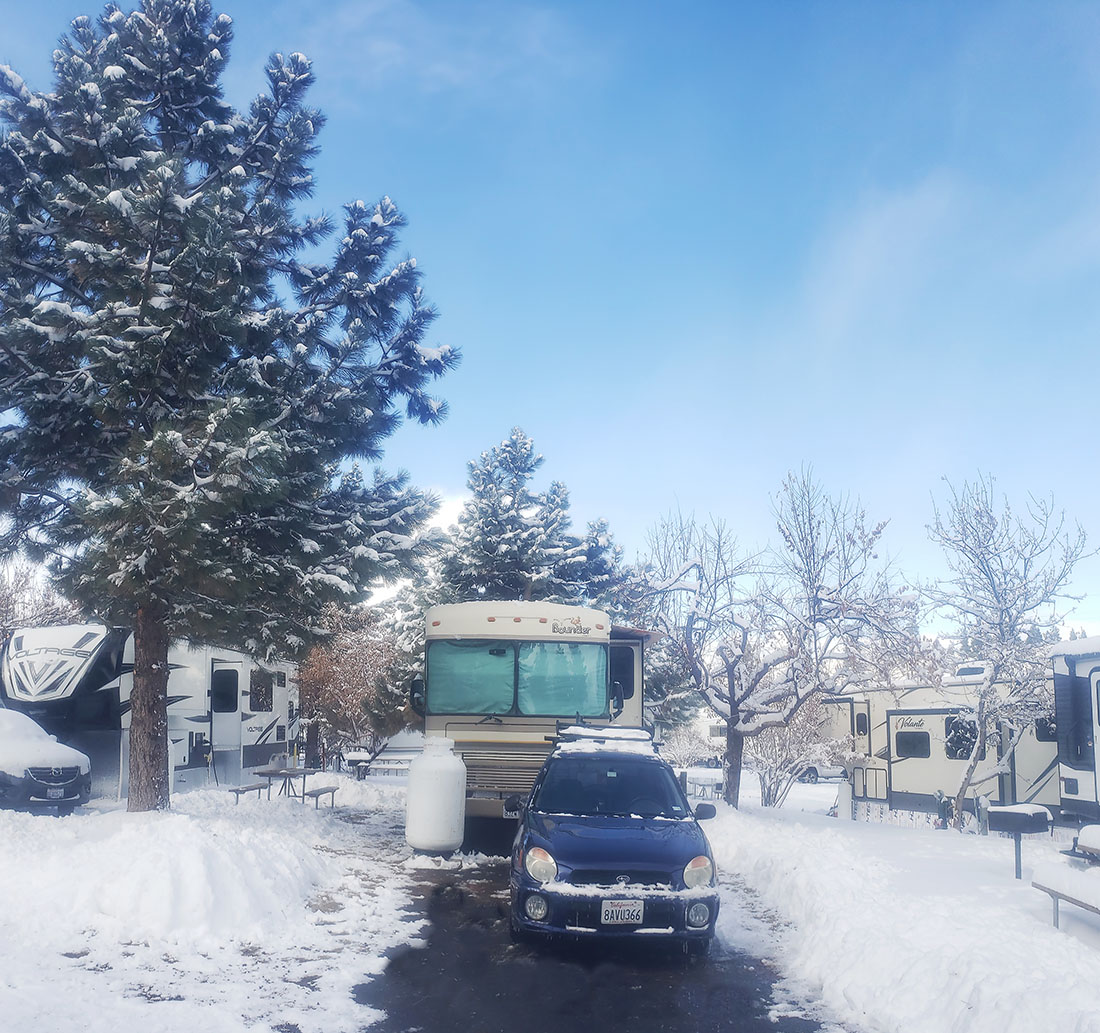
Photo: Tucker Ballister.
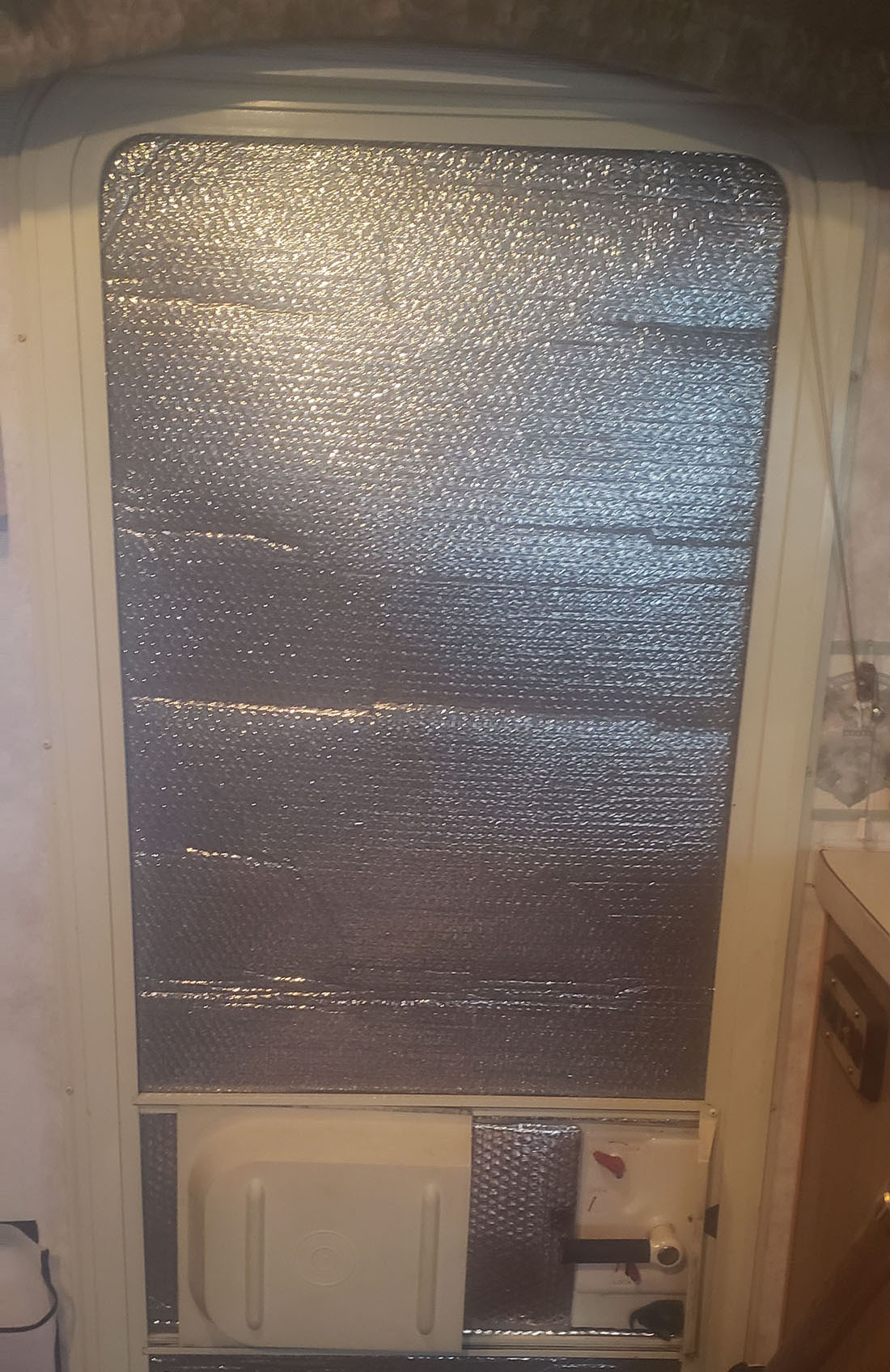
Photo: Tucker Ballister
Add Bubble Insulation
It might not be the prettiest solution out there, but adding bubble insulation to the interior walls of your RV will decrease total heat transfer. In other words, it can enhance your RV’s ability to hold in the heat that is generated by your RV’s propane heater.
If your RV is mostly going to be stationary during colder seasons, you can even use bubble insulation on some of the windows. Just make sure that you choose windows that you rarely open. Closing up all of the windows of your RV with bubble insulation eliminates your ability to let natural light in and can also compromise your ability to let the sun warm up your RV during the day.
Double (or Triple) Up On Heating Options
Most RVs rely on propane for their central heating source. While propane is usually a pretty cost-effective means of heating a small space, you can also look into portable electric heaters. If you decide to go this route, you’ll need to pay careful attention to the wattage of the heater(s) you purchase.
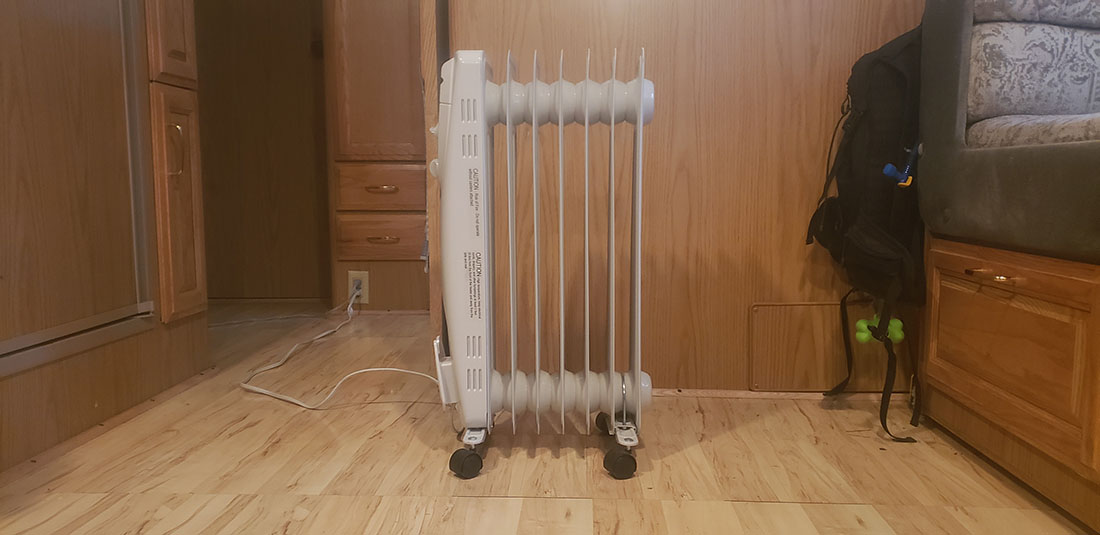
Photo: Tucker Ballister
Running more than one electric heater at a time can cause you to trip and the electrical breaker. Some heaters even require so much load that you may not be able to run the microwave, coffee pot, electric kettle, or any other appliances while it’s on. There is a wide range of electric heaters available out there, so be sure to do your research on which options are more (or less) efficient than others.
Purchase an RV Skirt
Skirting your RV will help to protect your pipes from freezing. If you don’t go with this option, you increase your risk of freezing when temperatures drop quite low. Freezing pipes can burst and lead to all sorts of larger damages. Placing a skirt around your RV is the best way to protect it from freezing when all-weather camping.
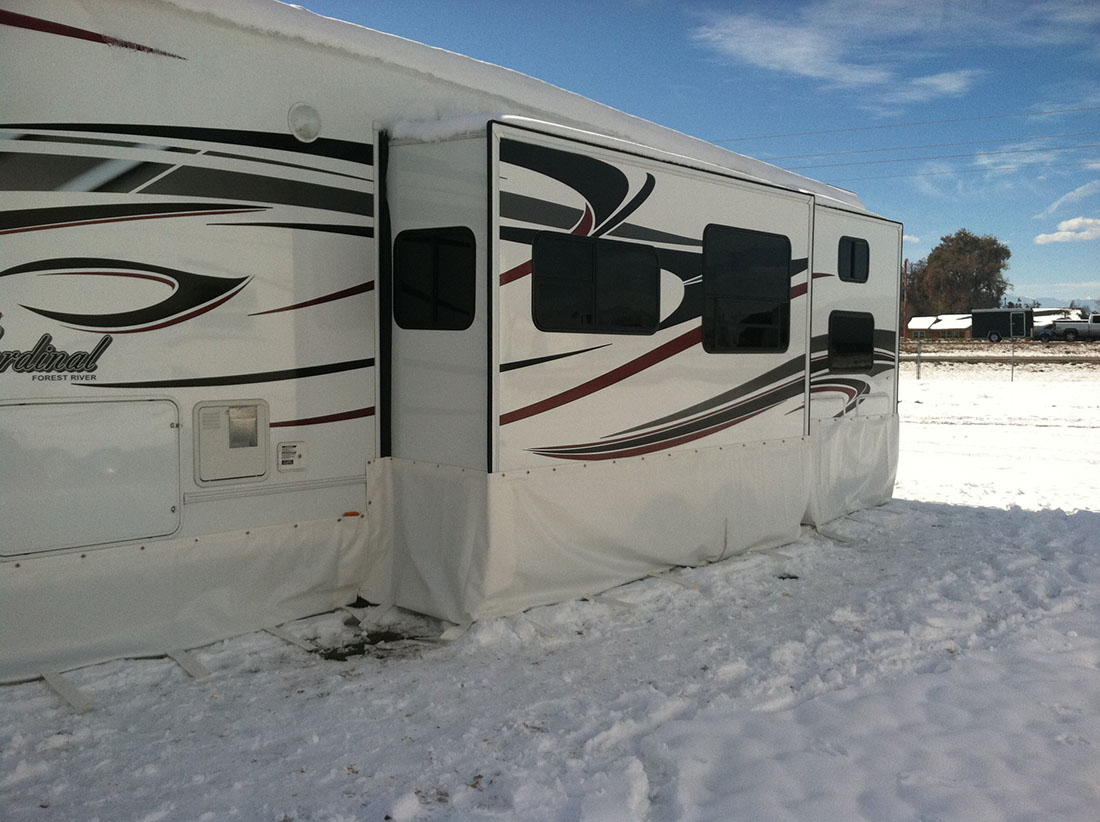
Photo: Curt Miller
There are a variety of approaches to skirting your RV. If you’re going to be on the move throughout the colder seasons but still want to get a skirt, I recommend looking into a snap-installation fabric skirt. If you plan to stay in one location throughout the colder season, one of the easiest skirting options is purchasing R-Tech foam insulation and using foil tape to secure it around the base of your RV. That is usually just a one-season solution, however, and you can consider adding plywood or composite particleboard outside of the R-Tech insulation if you’re looking for a solution that might have a longer lifespan.
Protect Your Water Hose
Water is certainly an element that we can’t live without. Freezing water hoses have doomed many would-be all weather campers. Fortunately, you can avoid the sickly feeling of realizing your water has frozen on a below-freezing night by protecting your water hose. You can either use some sort of pliable insulation material or heat tape to wrap your existing hose. Or you can purchase a heated drinking water hose that is made to withstand temperatures down to -20 degrees Fahrenheit.
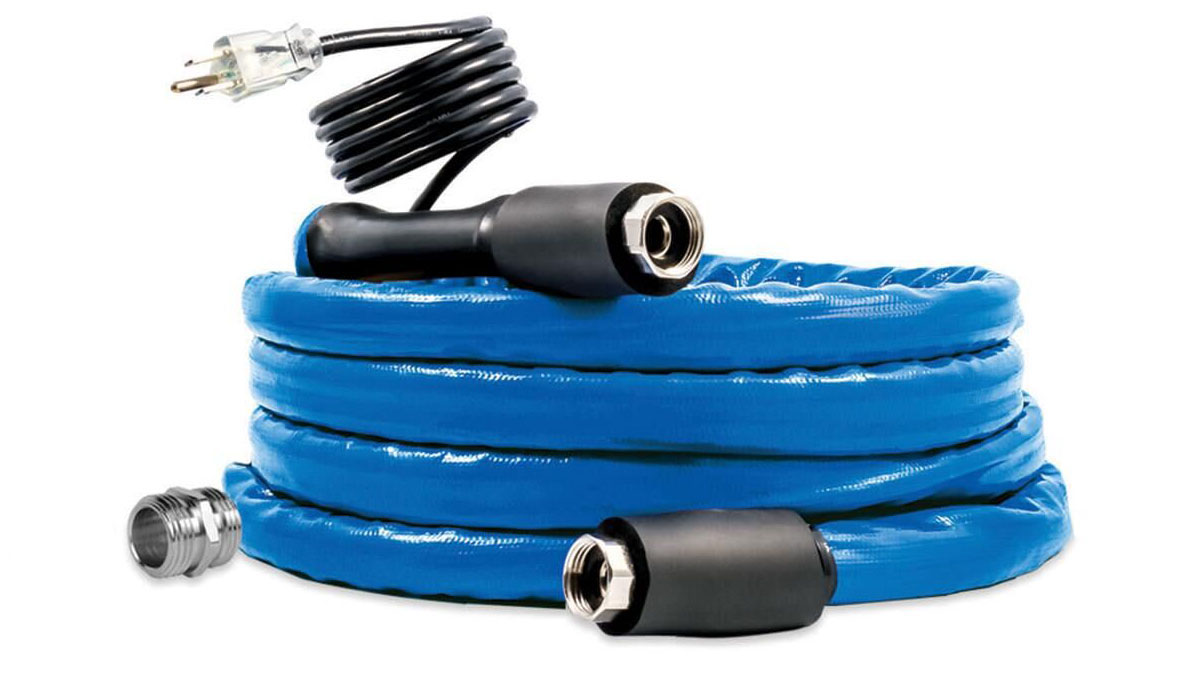
Heated drinking water hose. Photo: Camping World
These hoses come with a built-in thermostat and plug into the electrical connection in your RV’s compartments or at your external power outlet. This is an easy solution but it’s also an easy one to overlook. Protecting your water hose or getting a heated water hose will help you set up for colder seasons and forget about worrying over how cold it’s actually going to drop down to overnight.
Get a Heated Blanket
This is my favorite recommendation for preparing your SELF for all-weather RV camping. There are some days that just get wet, cold, and downright nasty when you’re living in an RV during the winter. But climbing into a nice, warm bed when snow is falling and winds are whipping outside will allow you to sleep peacefully and live to fight the elements another day.
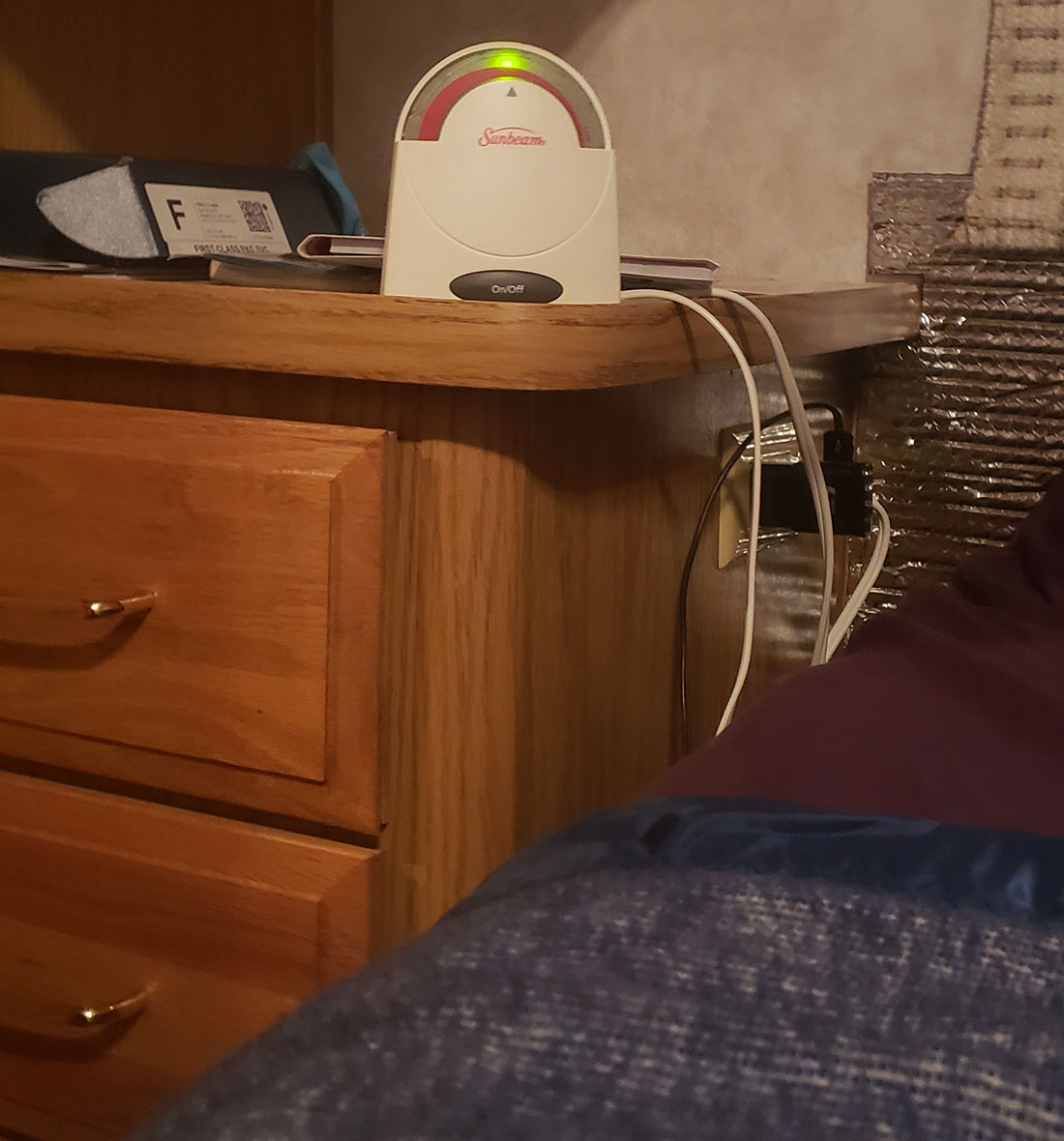
Sunbeam electric blanket. Photo: Tucker Ballister
Plus, a heated blanket has the added benefit of giving your RV pup (if you have one!) a warm place to curl up at the foot of your bed at night, rather than having him or her try to snuggle in under the covers with you!
A Few More Tips to Prepare Your RV for All-Weather Camping!
While those are the main five tips to prepare your RV for all-weather camping, there are a few more recommendations we’d like to share here:
- Check the temperature rating on your sewer hose. Most hoses are rated down to negative temperatures, but that’s not always the case. And surely you don’t want to be handling frozen you-know-what when it’s nearly frozen outside!
- Insulate the roof vents. Heat rises, right? So insulating the interior roof of your RV will help you keep more heat in as well. There’s no place that more heat will escape than your roof vents. Fortunately, they make pre-sized solar vent covers that serve this purpose!
- Make sure your roof is adequately sealed. There’s nothing worse than realizing this too late during your first major rainstorm in your RV. Take the time to put another coat of roof sealant down while the weather is still favorable.
- Turn on the lights in your underneath compartments at night and consider adding a drop light next to your water tank. These are small items that can go a long way to raise the ambient temperatures around your water tank and pipes. Even the slightest bump in temperature can make all the difference.
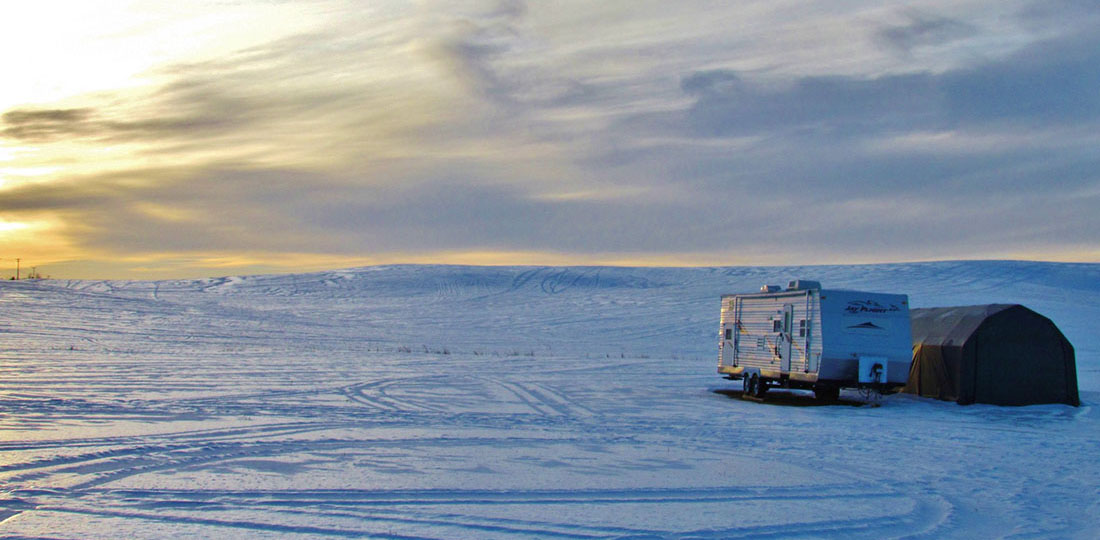
Photo: Mrs. WQ
Where Are You All-Weather Camping?
Every year, RVers across the country brave the cold and snowy (or rainy) elements to stay in their rigs throughout the winter season. We’d love to know where you’re all-weather camping this season and if you have any tips or tricks that we didn’t mention in this article. Please share them with us so that we can all promote happier, healthier all-weather RV campers out there!

